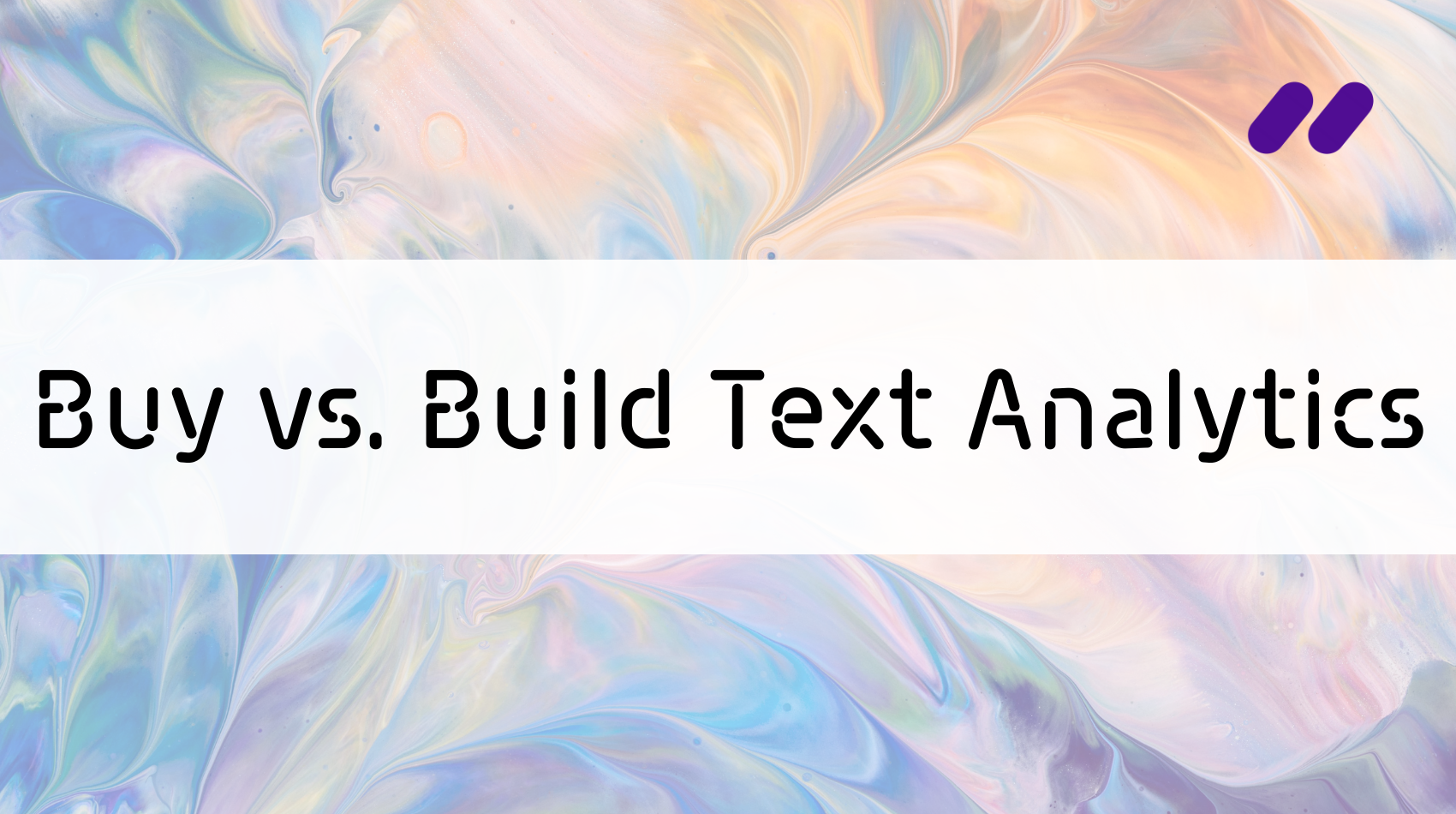Building your own in-house text analytics for VOC solution is, of course, a significant undertaking. With your expertise in VOC feedback collection, and your in-house data-analysis, development and support teams, you may feel it’s feasible. The first step will be to acquire the expertise you don’t have, namely, in natural language processing and machine learning—the fundamental skills on which any efficient and future-proofed automated solution is built.
This is an essential first step because, even if you use widely available open-source components for your solution, they will still need to be adapted by people who know what they’re doing. Ideally, you would want to recruit one or two experts in this field, as opposed to hiring consultants, so that you can better control your time-to-market and costs, and keep your solution up to date as time goes on. Though such skills are becoming more common now, they are still in reasonably short supply, particularly because they are also in high demand. Recruitment could take six months to a year before you start.
1. Assessing the components needed for a text analytics for VOC solution
Let’s look at the different components of the solution you will need to build. Firstly, there is what we have referred to thus far as collation: the gathering and arranging of multiple parts into proper sets or categories. Analyzing sentiment, words and sentences, from multiple sources, understanding their meaning in context, grouping them with synonyms and into topics, will form the first layer, and is a huge challenge in itself.
The second layer is the analysis you wish to extract. This of course requires defining the dimensions in advance: the type of feedback you’re looking for; the contextual information that’s important to you, such as who, when, where, what product, and so on; and how you’ll want to analyze the data, that is, what data ranges you’ll want to investigate. Once that’s done, you can get down to building the tools to enable that.
With the necessary in-house expertise, even using available open-source components as a starting framework, it will most likely take 12 months just to build a basic product. Then you will need to test it thoroughly on high volumes of unstructured feedback, to assess whether the results meet expectations in terms of accuracy. Unlike development with more traditional technologies, with AI it is difficult to anticipate outcomes. If your product doesn’t meet accuracy expectations, it may be possible to remedy it with a tweak in an algorithm; or you may have to go back to the drawing board.
You could have a working MVP in 18 months, ready to integrate with your existing systems. In a worst case scenario, your product development time could extend up to three years.
Of course, to provide the high level of quality of service your customers expect, in terms of real-time results and the flexibility to drill down into the details, you will need to incorporate a third layer to your solution. Building an interface that allows such a high level of interaction, and ensuring a frictionless user experience, requires a lot more additional development. It may be possible to integrate the two layers you already have with your existing structured data analytics and reporting software, but be aware that AI is a different type of animal that may not align well.
The complete solution will then need to be tested with multiple end-users, to verify this is a tool they can use to obtain information they can act on. In a best case scenario, testing will lead to a few iterations. In all, therefore, you could have a working MVP in 18 months, ready to integrate with your existing systems. In a worst case scenario, your product development time could extend up to three years. As we’ve seen previously, integration can take as long as an additional year.
[Further reading: FAQs About Unstructured Data and Text Analytics]
2. Assessing scalability and quality of service: How flexible is the solution?
Theoretically, building your own solution should enable you to offer your customers exactly what they want and more, in a timely manner, whether you offer it as self-serve or a white-glove service. As we’ve seen previously, AI is not limited to verticals, products or markets, and your solution will be able to grow with you.
Accuracy will depend on the level of expertise you can recruit. If you’ve found the right people and done a good job, there’s no reason you shouldn’t have access to the same imagined and unimagined results as a third-party AI solution. How good a self-service solution you have, will depend on how well you’ve been able to incorporate your customers’ feedback on the usability of the tool.
3. Calculating cost: How much to enable insights and actions to be identified?
As with a third-party AI solution, efficiency at the analysis stage is optimized. If you’re offering a value-added service, it could amount to a half day a week for the 6000 verbatim, or $525. If your solution is self-service, your customers may still need training to start them off, and there could be an ongoing support cost, depending on how easy the tool is to use. The rest is the amortization of your cost to build.
You are looking at between $657,000 and $1,314,000, depending on the length of the project. Not including integration costs, of course.
According to Payscale, a Research Engineer earns an average salary of $71,000 annually. Salary estimates on Indeed.ca for posts requiring artificial intelligence skills are around $80,000. To build your MVP, you will need to add up the cost of one AI expert, plus the other human resources dedicated to the project. These could include a team of 3-4 developers (at an average annual salary of $62,375), a project manager (average salary is $81,000) and, for the second layer at least, a data scientist (average salary $70,318, with machine learning skills pushing the average up to as much as $90,000). You are therefore looking at between $657,000 and $1,314,000, depending on the length of the project. Not including integration costs, of course.
Since this type of product is probably very different from your current technology stack, you may also require additional resources, with different skillsets, to develop the user interface and maintain and support it, adding to the cost. And don’t forget that you will also need to budget for recruitment costs for any new talents you bring on board.
Unlike the previous options we have evaluated, building your own solution is less a question of calculating cost than ROI. Perhaps the main factor to take into account when assessing your investment is whether you intend to sell the product you end up with as a standalone solution. Developing an additional service offering as a one-off project may also affect your ability to attract and retain the skilled personnel you need.





